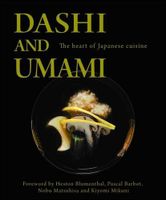Advertisement
Umami
The science of dashi
Appears in
The one thing which connects all the different types of dashi is that they are rich in the taste known as umami. Not only is this taste the basis of the deliciousness of Japanese cuisine, but it is fundamental to the enjoyment of food around the world.
Cooks everywhere have been using the taste of umami in their food for millennia without even knowing it. From the Roman use of fermented fish sauce to modern French stocks, umami-rich ingredients give their dishes an extra depth and a fuller flavour. However, it is only in the past 100 years that the source of this savouriness has been properly identified as umami, the fifth basic human taste. This is thanks to Professor

